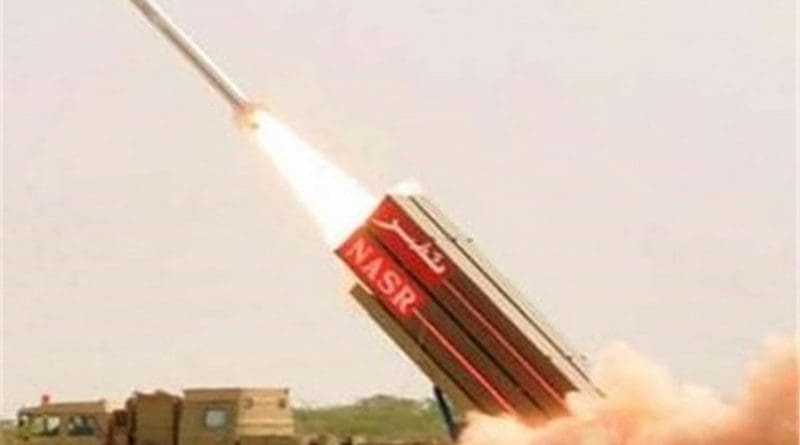Denying India Space For Limited War Under The Nuclear Threshold – OpEd
War that is limited in terms of territory, the end objectives pursued, choice of weaponry adopted and where the use of weapons of mass destruction is avoided is widely regarded as a limited war. Since the nuclearization of South Asia in 1998 however, the region’s security dynamics have changed with the threat of a conventional war increasingly moving towards a nuclear one.
It is widely argued that the presence of a nuclear deterrent between Pakistan and India has so far prevented a full-scale conflict. However, with India evolving its military doctrines to create ground for a more limited conventional war under the nuclear threshold, the prevailing status quo remains highly at risk. This notion has since paved the way for the Cold-Start doctrine of 2004, Joint Doctrine of the Indian Armed Forces of 2017 and Land Warfare Doctrine of 2018. All these military doctrines indicate a shift from a defensive to an offensive pre-emptive military posture specifically vis-à-vis Pakistan.
To enhance its pre-emptive and offensive military capabilities, India plans to train smaller, agile and more integrated battle groups with synchronized support from its Infantry, artillery and air force divisions. Its military planners are of the view that they would carry out quick punitive strikes inside Pakistan by using these newly developed limited battle-oriented divisions while keeping the conflict below the threshold of a potential nuclear exchange between both the countries. The formations of these integrated battle groups are a direct reflection of its limited war strategy that would strategically enhance India’s response time vis-à-vis Pakistan.
Over last few years, Pakistan has also revisited its nuclear doctrine by moving from minimum credible deterrence towards full spectrum deterrence in order to respond to these developments. These include taking measures to develop its own tactical nuclear capable missile systems focusing on accuracy, enhanced mobility and quick response times. The operationalization of this missile system has purportedly served as a viable deterrent to India’s ability to wage a limited war by significantly reducing the nuclear threshold.
It has been widely claimed that the addition of tactical nuclear weapons system such as the Nasr system has considerably limited the efficacy of India’s cold start doctrine. This has arguably compelled India to adopt its much-touted concept of ‘Surgical Strikes’ as a new strategy to keep the space for limited war with Pakistan open.
India’s surgical strikes narrative can be argued as being somewhat inspired by the US Special Forces’ 2011 Operation Neptune Spear which had led to the killing of Osama Bin Laden. The operation which has since been characterized as one of the most technologically advanced and sophisticated operations to have been carried out inside Pakistani territory has since left a lasting legacy on Pakistan’s relations with the US.
Since this operation was conducted India has repeatedly claimed that it also has the capacity and capability to carry out similar strikes deep inside Pakistani territory. This for instance was evident when India claimed its first ever surgical strike against Pakistan in response to the 2016 Uri attack. This narrative has since found widespread domestic support within India.
Whereas Pakistan has repeatedly rejected these claims on the pretext that any form of a surgical or conventional strike on Pakistani territory would be considered as a red line which in itself represents its nuclear threshold.
It was this aspect that was put to test following the Pulwama incident when, India once again violated the sovereignty of Pakistan by conducting air-strikes at Balakot which is almost 4 to 5 kms from its eastern border with India. Dubbed by its media as surgical strike 2.0, these strikes were aimed at portraying India’s capacity and will power to carry out a conventional strike against Pakistan below the nuclear threshold. Pakistan regarded this as an act of aggression and a blatant violation of its territorial integrity. It however chose to respond via conventional means claiming that it would control the escalation ladder throughout the conflict. Whereas, tensions were diffused after the first ever aerial engagement between two nuclear weapon’s states, such kinds of misadventures have the potential to turn a limited conventional conflict to a full-scale nuclear war that could prove lethal for the entire region.
At the present, it appears that India, under the cloak of its offensive pre-emptive doctrinal strategies intends to upgrade, modernize and enhance the capacity of its armed forces by increasing its military budget. In terms of modernization, India has signed a $5.43-billion deal with Russia for the S-400 air defence system.
There are also reports suggesting that the US is prepared to offer India its fifth-generation F-35 aircraft if India were to scraps its S-400 deal with Russia. The acquisition of either of these state-of-the-art weapon systems would not only add to the Indian air force’s penetrative and strike capabilities as part of its narrative of surgical strikes but also pose a direct threat to strategic stability in South Asia
If India decides to start a limited war once again under the nuclear threshold there is a higher chance that it would have to face disastrous and lasting consequences as opposed to its more immediate objective of projecting power. Hence, because of its growing fascination with the surgical strikes narrative India runs the risk of potentially turning a limited war into an all-out conflict further risking escalation to nuclear strikes.
Based on these dynamics it is imperative that strategic planners on both sides exercise restraint especially considering how such pre-emptive/ cold start and surgical strikes strategies are undermining peace and stability across the wider region.
*The author works as a Research Affiliate at the Strategic Vision Institute Islamabad and can be reached at [email protected]


Good try with the Bumb.